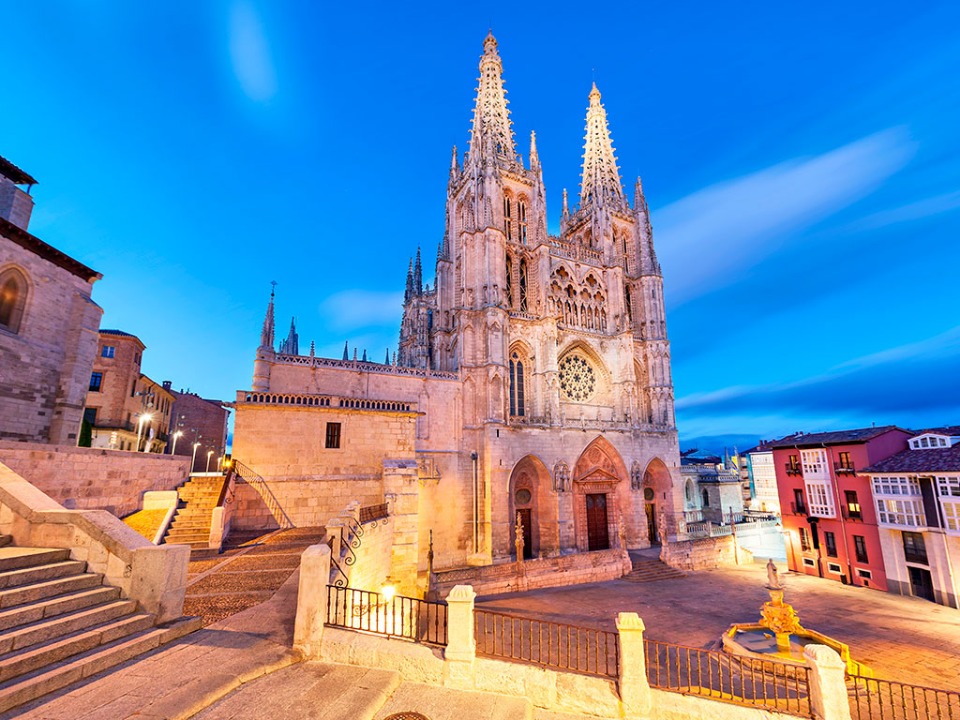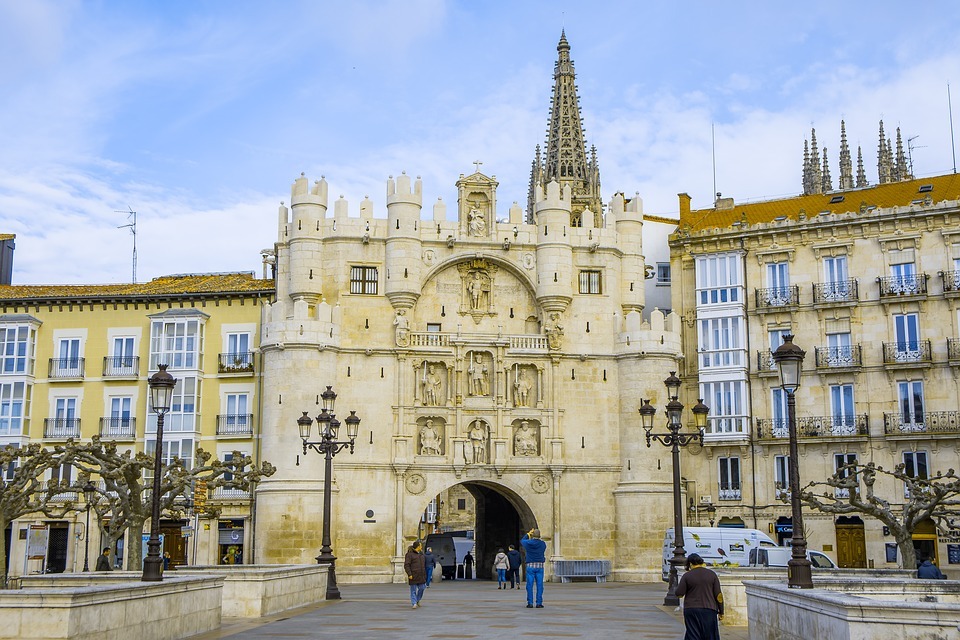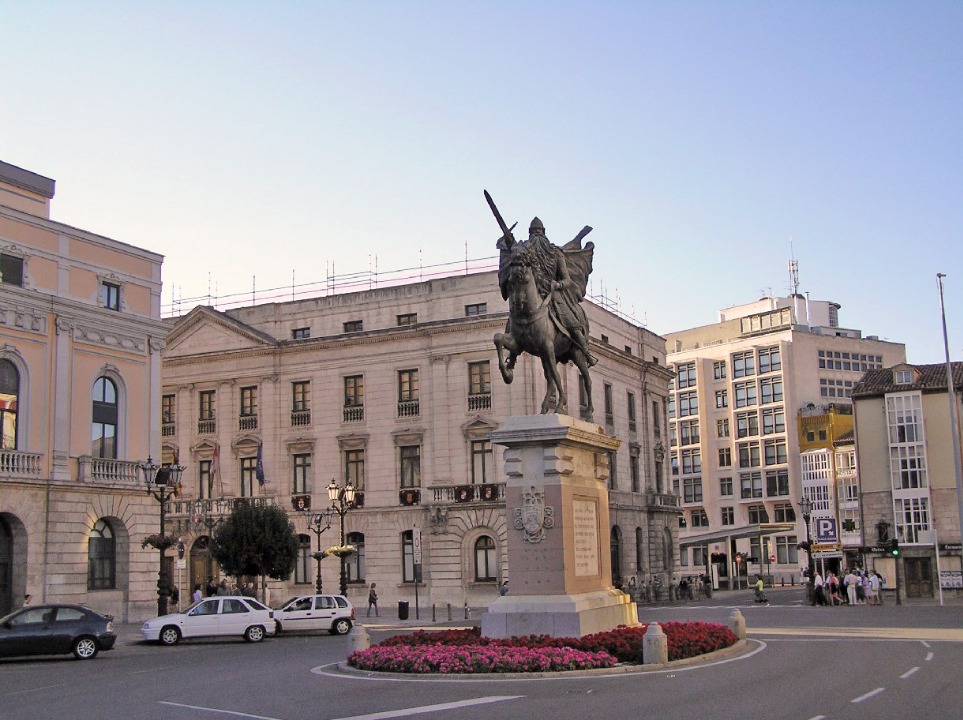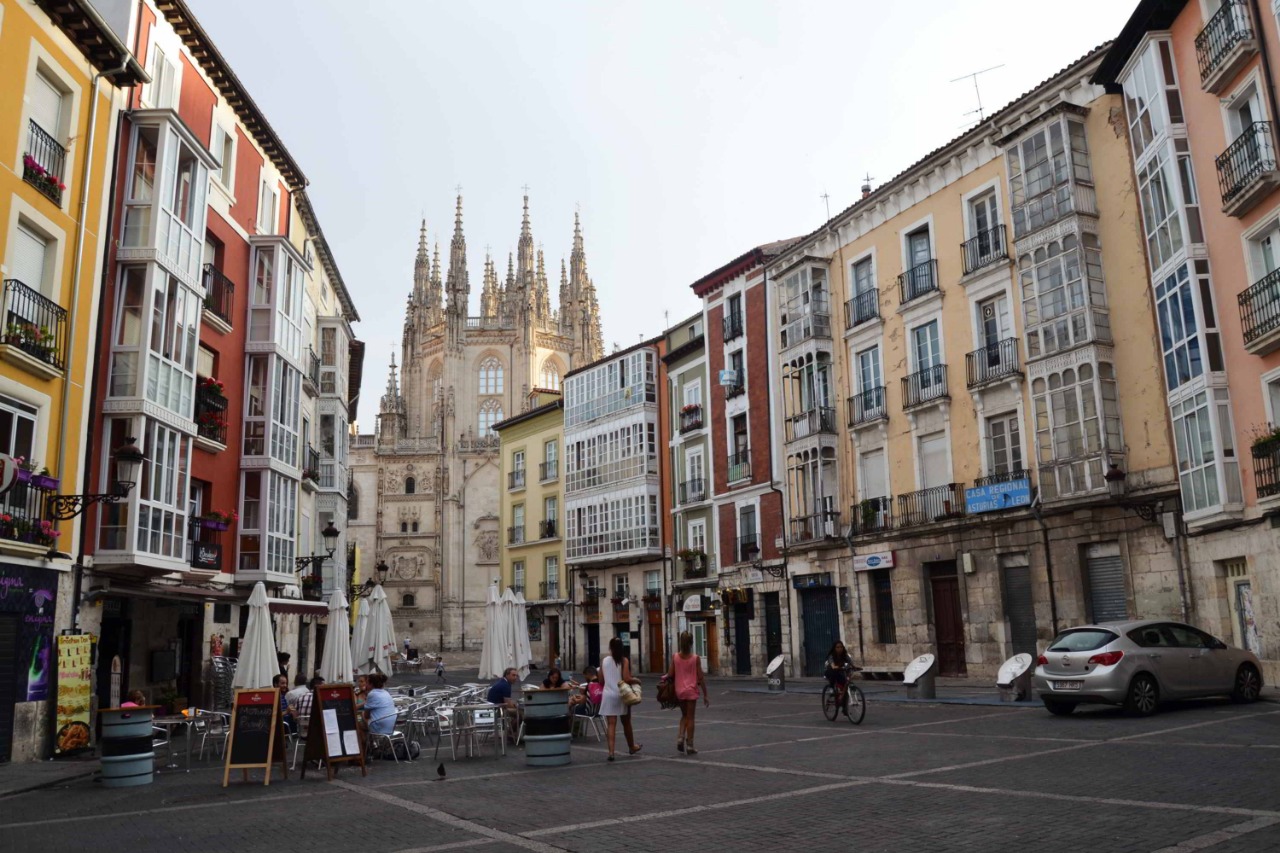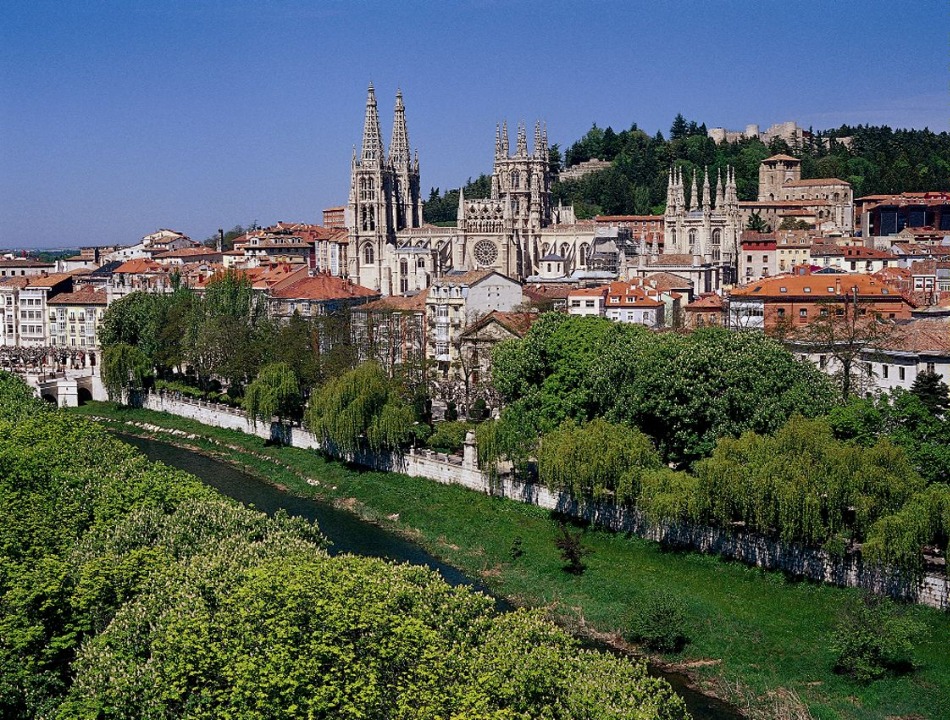Pictures of: Burgos, Spain
Location map
Airports
Hotels and other Accommodation
Golf Courses
What to visit
World Nomads
The Travel Insurance with the largest coverage

The Travel Insurance with the largest coverage

Burgos
Located in the interior of Spain, in the northern region of Castilla y León. Its capital is the city of Burgos, where Spain's only cathedral is individually recognized as a World Heritage Site by UNESCO.
The other good thing about the province's rich cultural heritage is Atapuerca, one of the most important in Europe and declared a World Heritage Site by UNESCO. Of interest are also the municipalities of Santo Domingo de Silos, Covarrubias, Frías and Aranda de Duero. Also, in this area it is easy to find multiple activities related to oenology.
The other good thing about the province's rich cultural heritage is Atapuerca, one of the most important in Europe and declared a World Heritage Site by UNESCO. Of interest are also the municipalities of Santo Domingo de Silos, Covarrubias, Frías and Aranda de Duero. Also, in this area it is easy to find multiple activities related to oenology.
Tourism
Burgos, a city in Castile and Leon situated on the Pilgrim's Road to Santiago de Compostela, still preserves important traces of its medieval splendor. The city, which has been the capital of the unified kingdom of Castile and Leon for five centuries, has a masterpiece of Spanish Gothic architecture: the cathedral of Burgos, declared a World Heritage Site. In addition to a visit to the historic quarter, you can take a very interesting walk along the banks of the Douro and Arlanza rivers. Great places to approach delicious and varied cuisine.
The city of Burgos, crossed by the Arlanzón river, is a few kilometers from the prehistoric site of Atapuerca, declared a World Heritage Site. A military village in its origins, the city slowly became a powerful commercial city in the Middle Ages. A critical factor in this development was that Burgos was the capital of the unified kingdom of Castilla-Leon between the 10th and 15th centuries, its privileged location on the Pilgrim Road to Santiago de Compostela and its monopoly over the merino wool trade. All this splendor has left a deep imprint on present-day Burgos. At the foot of the castle fort, which has the best views of the city, the medieval quarter unfolds. Some of the notable buildings of this place include the San Esteban Mudejar Arch and the Gothic church of the same name, which houses the Reredos Museum. Another important temple is the one dedicated to San Nicolás, where you can see a magnificent polychrome alabaster altarpiece.
World Heritage
But above all, the architectural work of Burgos is the cathedral, declared a World Heritage Site by UNESCO. Perched on top of a Romanesque temple, the cathedral was built following a French Norman Gothic model. Filigree work on the towers of the towers and outside the Chapel of High Constance are some of the masterpieces found in this cathedral. Such beauty and incredible genius lead to a long list of exceptional artwork within. These include the starry dome that covers the tombs of El Cid and Doña Jimena, the choir, sarcophagi and the Golden Staircase, built by Spanish architect and sculptor Diego de Siloé, a prominent figure during the Spanish Renaissance.
Beautiful examples of civil architecture include the Casa de Miranda, which houses the Burgos Museum, with an important collection of archaeological artifacts, and the Casa Angulo, which houses the Museum of Fine Arts. The most notable home, however, is the Casa del Cordón, where Catholic monarchs received Christopher Columbus after he returned from his second trip to the New World.
To both ends of the historic district of Burgos you will find important buildings. In the far west is the Royal Monastery of Huelgas Reales, with an impressive Gothic cloister and the famous Chapel of St. James the Apostle. Next to it is the Museum of rich canvas, the textile museum that displays, among other things, the historic flag that was snatched from the Arabs at the Battle of Navas de Tolosa in 1212. East of the capital, at the Carthusian monastery of Miraflores, is a incredible color carrier, among other works of art. The legend is that it was plated with the first gold shipment that arrived after the Discovery of America.
Burgos
The privileged location of the capital of Burgos allows visitors to cover the entire province, following interesting routes into the heart of Castile and León. One of these routes runs from Burgos along the bank of the Arlanza River, revealing medieval churches and convents, feudal castles and palaces. Renaissance. These authentic jewels of Burgos architecture are located in cities such as Lerma, Santo Domingo de Silos and Quintanilla de las Viñas.
The Pilgrim Road to Santiago de Compostela, declared World Heritage, runs through the province of Burgos. It consists of an artistic and cultural route with churches, hermitages and pilgrim hospitals, along the cities of Belorado, Villafranca Montes de Oca and Castrogeriz.
Ribera del Duero, the birthplace of one of the most acclaimed designations of origin for wine, surprises visitors with beautiful historic cities. Aranda, Peñaranda and Roa (all in the Duero region) exhibit Gothic reliefs, Renaissance coffered ceilings and interesting wineries.
Popular architecture spreads around dense valleys, high plateaus and shady terrain. There are many cities where, in addition to admiring their artistic and cultural heritage, it is possible to practice outdoor and environmentally friendly sports. These include Miranda del Ebro, Treviño and Villasana de Mena.
The city of Burgos, crossed by the Arlanzón river, is a few kilometers from the prehistoric site of Atapuerca, declared a World Heritage Site. A military village in its origins, the city slowly became a powerful commercial city in the Middle Ages. A critical factor in this development was that Burgos was the capital of the unified kingdom of Castilla-Leon between the 10th and 15th centuries, its privileged location on the Pilgrim Road to Santiago de Compostela and its monopoly over the merino wool trade. All this splendor has left a deep imprint on present-day Burgos. At the foot of the castle fort, which has the best views of the city, the medieval quarter unfolds. Some of the notable buildings of this place include the San Esteban Mudejar Arch and the Gothic church of the same name, which houses the Reredos Museum. Another important temple is the one dedicated to San Nicolás, where you can see a magnificent polychrome alabaster altarpiece.
World Heritage
But above all, the architectural work of Burgos is the cathedral, declared a World Heritage Site by UNESCO. Perched on top of a Romanesque temple, the cathedral was built following a French Norman Gothic model. Filigree work on the towers of the towers and outside the Chapel of High Constance are some of the masterpieces found in this cathedral. Such beauty and incredible genius lead to a long list of exceptional artwork within. These include the starry dome that covers the tombs of El Cid and Doña Jimena, the choir, sarcophagi and the Golden Staircase, built by Spanish architect and sculptor Diego de Siloé, a prominent figure during the Spanish Renaissance.
Beautiful examples of civil architecture include the Casa de Miranda, which houses the Burgos Museum, with an important collection of archaeological artifacts, and the Casa Angulo, which houses the Museum of Fine Arts. The most notable home, however, is the Casa del Cordón, where Catholic monarchs received Christopher Columbus after he returned from his second trip to the New World.
To both ends of the historic district of Burgos you will find important buildings. In the far west is the Royal Monastery of Huelgas Reales, with an impressive Gothic cloister and the famous Chapel of St. James the Apostle. Next to it is the Museum of rich canvas, the textile museum that displays, among other things, the historic flag that was snatched from the Arabs at the Battle of Navas de Tolosa in 1212. East of the capital, at the Carthusian monastery of Miraflores, is a incredible color carrier, among other works of art. The legend is that it was plated with the first gold shipment that arrived after the Discovery of America.
Burgos
The privileged location of the capital of Burgos allows visitors to cover the entire province, following interesting routes into the heart of Castile and León. One of these routes runs from Burgos along the bank of the Arlanza River, revealing medieval churches and convents, feudal castles and palaces. Renaissance. These authentic jewels of Burgos architecture are located in cities such as Lerma, Santo Domingo de Silos and Quintanilla de las Viñas.
The Pilgrim Road to Santiago de Compostela, declared World Heritage, runs through the province of Burgos. It consists of an artistic and cultural route with churches, hermitages and pilgrim hospitals, along the cities of Belorado, Villafranca Montes de Oca and Castrogeriz.
Ribera del Duero, the birthplace of one of the most acclaimed designations of origin for wine, surprises visitors with beautiful historic cities. Aranda, Peñaranda and Roa (all in the Duero region) exhibit Gothic reliefs, Renaissance coffered ceilings and interesting wineries.
Popular architecture spreads around dense valleys, high plateaus and shady terrain. There are many cities where, in addition to admiring their artistic and cultural heritage, it is possible to practice outdoor and environmentally friendly sports. These include Miranda del Ebro, Treviño and Villasana de Mena.
Gastronomy
Burgos cuisine is enriched by a great variety of local products, like pulses, cured sausages, game meat, etc. Suckling lamb baked in a wood-fired oven, soused trout and cod stew are some of its best main courses. For dessert, try the delicious "yemas" (a sweet made with egg yolks and sugar), fresh cheese with honey and walnuts, or caramel almonds. All this should be had with some of the famous wines that hold the label Designation of Origin - Ribera del Duero.
Weather
The climate is continental Mediterranean with Mediterranean influences of precipitation.
Spring is the wettest season, while summer is milder and less humid than in the Mediterranean.
Winter is cold and it snows, often abundantly, sometimes even in spring, with minimum temperatures sometimes reaching -10 ° C.
Spring is the wettest season, while summer is milder and less humid than in the Mediterranean.
Winter is cold and it snows, often abundantly, sometimes even in spring, with minimum temperatures sometimes reaching -10 ° C.
Other tourist destinations in:
Spain
Spain
Other world tourist destinations
Why to book with BOOK HOTEL MADEIRA
The best prices
Our partnerships with the world´s largest operators offer research on the best market prices.
More options
At Rotas Turisticos you can book the hotel, buy the air ticket, book the transfer from the airport to the hotel and vice versa, book the local excursions, rent the car, take travel insurance and consult the places to visit and where to go.
Holiday Tips & Destinations
Hundreds of holiday destinations with all the options that allow you to easily choose the destination that best suits your dream vacation.
BOOK HOTEL MADEIRA
Links

